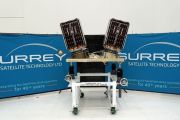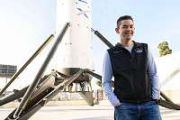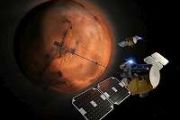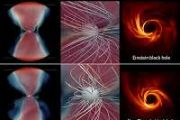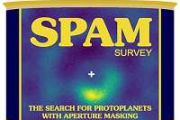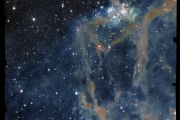
Copernical Team
Small geostationary satellite named HummingSat passes milestone review

An innovative small-sized satellite product line for geostationary telecommunications has passed its ESA system requirements review and received its official name of “HummingSat”.
Eutelsat and OneWeb to Combine: Company Statement
 Eutelsat Communications (Euronext Paris: ETL) and key OneWeb shareholders have signed a Memorandum of Understanding with the objective of creating a leading global player in Connectivity through the combination of both companies in an all-share transaction. Eutelsat will combine its 36-strong fleet of GEO satellites with OneWeb's constellation of 648 Low Earth Orbit satellites, of which 428 are
Eutelsat Communications (Euronext Paris: ETL) and key OneWeb shareholders have signed a Memorandum of Understanding with the objective of creating a leading global player in Connectivity through the combination of both companies in an all-share transaction. Eutelsat will combine its 36-strong fleet of GEO satellites with OneWeb's constellation of 648 Low Earth Orbit satellites, of which 428 are DOD secures critical material for Webb Telescope
 NASA's James Webb Space Telescope recently captured the highest-resolution image of the universe in infrared that has ever been seen. The historic photos were made possible by the Defense Department's ability to secure strategic and critical materials necessary for the mission.
At the top of that list is the unique element beryllium.
Invisible to X-rays and with a stiffness six times
NASA's James Webb Space Telescope recently captured the highest-resolution image of the universe in infrared that has ever been seen. The historic photos were made possible by the Defense Department's ability to secure strategic and critical materials necessary for the mission.
At the top of that list is the unique element beryllium.
Invisible to X-rays and with a stiffness six times CAES' Quad Core LEON4FT processor selected for on-orbit servicing spacecraft
 CAES, a leader in advanced mission-critical electronics for aerospace and defense, has announced that its radiation hardened microelectronics are on board SpaceLogistics' Mission Robotic Vehicle (MRV) Spacecraft, and the Mission Extension POD (MEP), which will be deployed to assist in extending the life of aging satellites in space.
The MRV is the second-generation servicing vehicle follow
CAES, a leader in advanced mission-critical electronics for aerospace and defense, has announced that its radiation hardened microelectronics are on board SpaceLogistics' Mission Robotic Vehicle (MRV) Spacecraft, and the Mission Extension POD (MEP), which will be deployed to assist in extending the life of aging satellites in space.
The MRV is the second-generation servicing vehicle follow US, UK reportedly working on defense against Russian, Chinese hypersonic missiles
 American and British arms companies have been working on the creation of defense systems against Russian and Chinese hypersonic missiles, though the project is only "in its infancy" in the United States, The Telegraph reported on Sunday.
In particular, British company Cohort has been developing technologies to destroy weapons moving five times faster than the speed of sound, Andy Tomis, th
American and British arms companies have been working on the creation of defense systems against Russian and Chinese hypersonic missiles, though the project is only "in its infancy" in the United States, The Telegraph reported on Sunday.
In particular, British company Cohort has been developing technologies to destroy weapons moving five times faster than the speed of sound, Andy Tomis, th China's space program eyes peaceful cooperation
 A recent report by US magazine The National Interest demonized China's achievements in space by interpreting China's space exploration missions, including the lunar program and manned spaceflight, as "threats to US leadership in space" and a "detriment to US national security."
This report is just the tip of iceberg in the US' sustained attempts to suppress and discredit China's space prog
A recent report by US magazine The National Interest demonized China's achievements in space by interpreting China's space exploration missions, including the lunar program and manned spaceflight, as "threats to US leadership in space" and a "detriment to US national security."
This report is just the tip of iceberg in the US' sustained attempts to suppress and discredit China's space prog New method can improve explosion detection
 Computers can be trained to better detect distant nuclear detonations, chemical blasts and volcano eruptions by learning from artificial explosion signals, according to a new method devised by a University of Alaska Fairbanks scientist.
The work, led by UAF Geophysical Institute postdoctoral researcher Alex Witsil, was published recently in the journal Geophysical Research Letters.
W
Computers can be trained to better detect distant nuclear detonations, chemical blasts and volcano eruptions by learning from artificial explosion signals, according to a new method devised by a University of Alaska Fairbanks scientist.
The work, led by UAF Geophysical Institute postdoctoral researcher Alex Witsil, was published recently in the journal Geophysical Research Letters.
W Canada's military creates new space division
 The Royal Canadian Air Force (RCAF) has established the 3 Canadian Space Division as its newest addition to the country's military, the Department of National Defense said in a statement on Friday.
"Today, Lieutenant-General Al Meinzinger, Commander of the Royal Canadian Air Force (RCAF), and Brigadier-General Mike Adamson, Commander of 3 Canadian Space Divis
The Royal Canadian Air Force (RCAF) has established the 3 Canadian Space Division as its newest addition to the country's military, the Department of National Defense said in a statement on Friday.
"Today, Lieutenant-General Al Meinzinger, Commander of the Royal Canadian Air Force (RCAF), and Brigadier-General Mike Adamson, Commander of 3 Canadian Space Divis Building the infrastructure for Advanced Air Mobility
 Small drones delivering packages, air taxis carrying passengers, or air ambulance providing lifesaving transportation - these are just some of the concepts NASA's Advanced Air Mobility (AAM) mission is helping get into our skies. For these aircraft to safely operate, cities, suburbs, and rural areas will need new or enhanced infrastructure.
Imagine a network of routes where new aircraft wo
Small drones delivering packages, air taxis carrying passengers, or air ambulance providing lifesaving transportation - these are just some of the concepts NASA's Advanced Air Mobility (AAM) mission is helping get into our skies. For these aircraft to safely operate, cities, suburbs, and rural areas will need new or enhanced infrastructure.
Imagine a network of routes where new aircraft wo Smaller, stronger magnets could improve fusion devices
 Researchers at the U.S. Department of Energy's (DOE) Princeton Plasma Physics Laboratory (PPPL) have found a way to build powerful magnets smaller than before, aiding the design and construction of machines that could help the world harness the power of the sun to create electricity without producing greenhouse gases that contribute to climate change.
The scientists found a way to build hi
Researchers at the U.S. Department of Energy's (DOE) Princeton Plasma Physics Laboratory (PPPL) have found a way to build powerful magnets smaller than before, aiding the design and construction of machines that could help the world harness the power of the sun to create electricity without producing greenhouse gases that contribute to climate change.
The scientists found a way to build hi 







